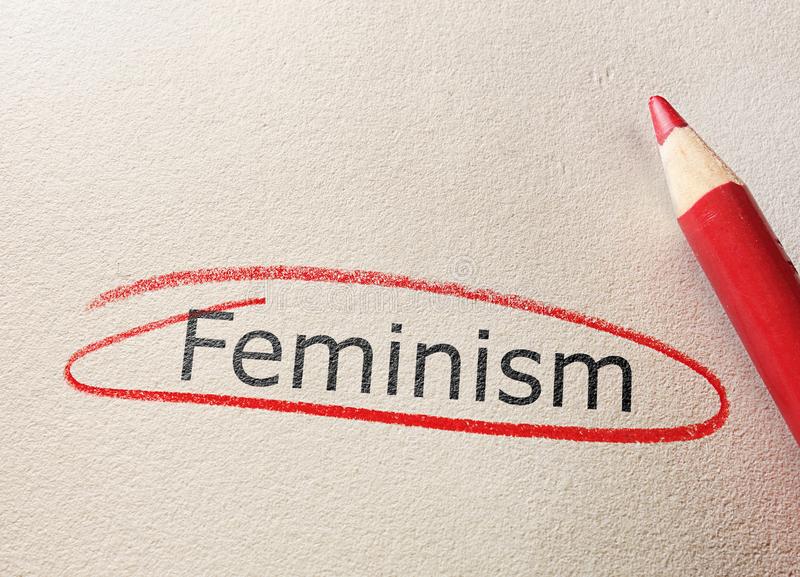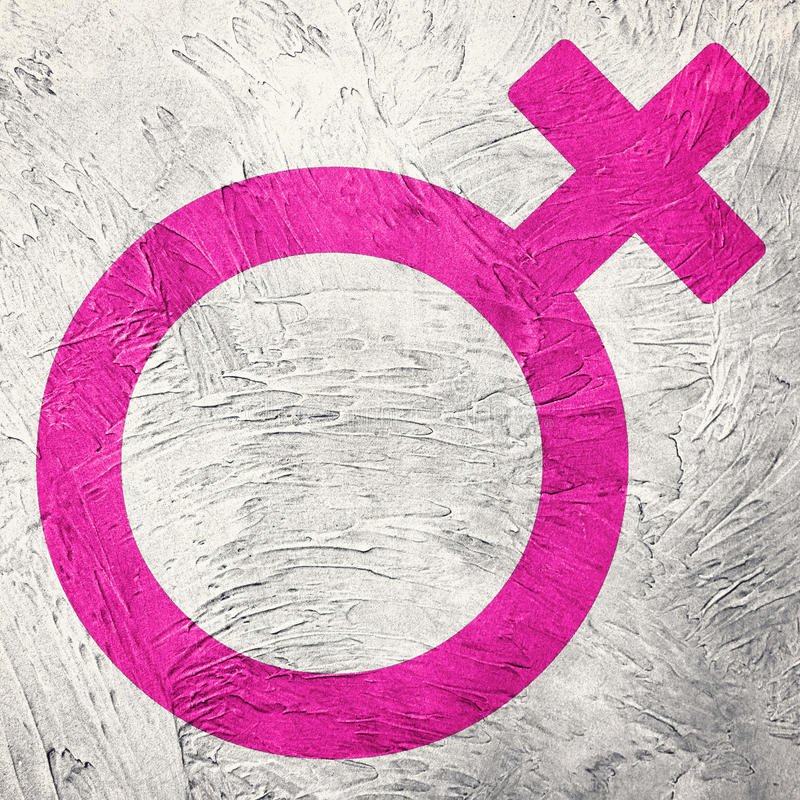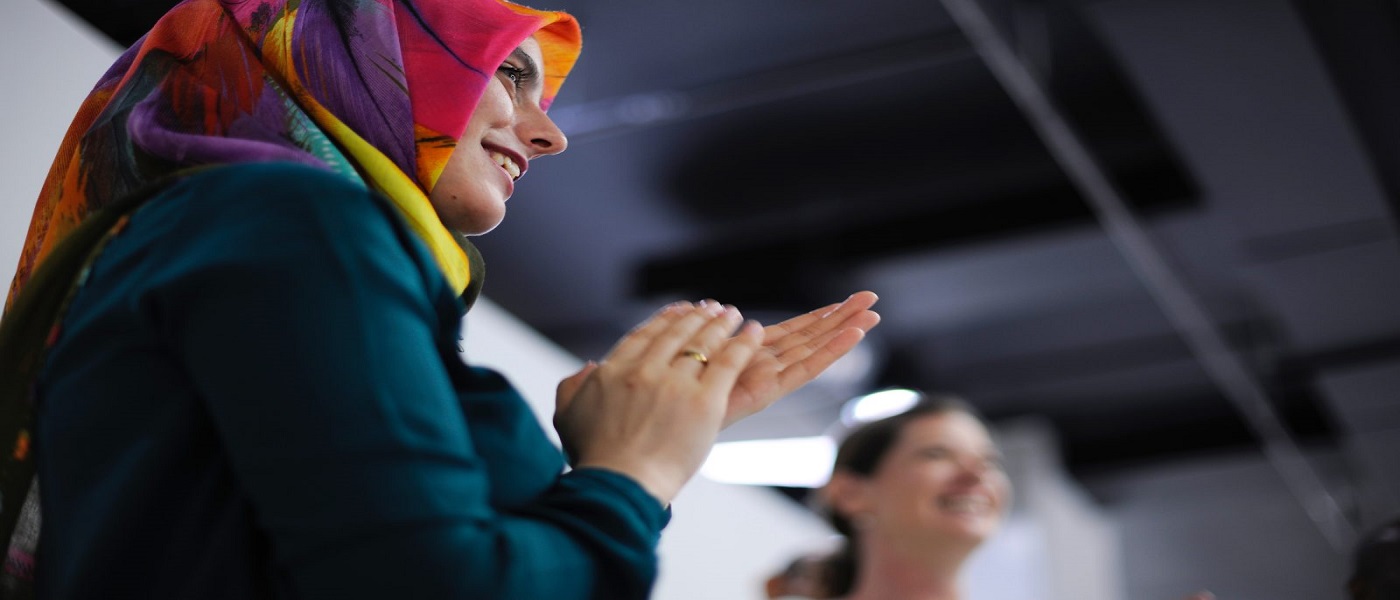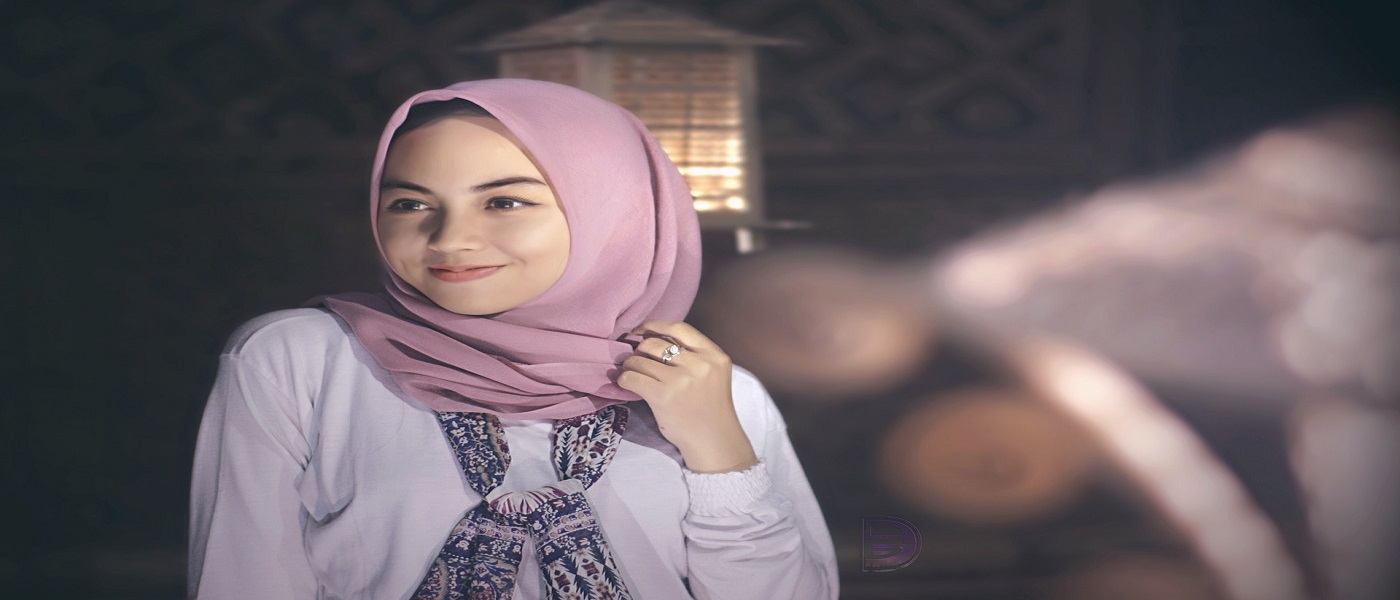

Women, Beautiful Flowers
“Women’s rights” is one of the most important and controversial issues in the world. Today, many people believe that social laws are against the rights of women and should be changed.
Feminism
The western world has experienced lots of social revolutions and movements till now including, Marxism, Communism, Abolitionism, etc. Usually, in these movements, people of a lower social class try to fight against the tyranny and oppression of a higher social class. One of these controversial movements has been Feminism which falls into three eras in the western world.
The first era dates back to the 17th and 18th centuries when the movement was against the Patriarchal culture in the west. As a matter of fact, women supporting Feminism in this era, wanted to be considered respected members of society and that the society understood that sex and gender was not the proper index for making the designation “lower or higher social class”. In other words, the first era can be considered as a philosophical view that indicates the physiology of humans doesn’t put them in a lower or higher position in the society and women should be recognized and respected as humans just like men.
Politicians, scientists and people gradually accepted Feminism in the first era but after a while, the Feminist movement approaches its second phase when feminists intended to be not only respected or considered the same but they also wanted to gain the same position in social activities and have the same jobs just like men.
Feminism in the second era is/was after equalizing the rights of men and women in the community i.e. women can do the same as men even in some complex jobs like Municipal services.
Nowadays, the whole world is facing the third phase of the movement which is called “Modern Feminism”. If we look more precisely into Feminism in the first and second eras we may notice that the main concepts of these two are justice and equality but in the third phase the core concept of modern Feminism is power. Feminists in the first and the second eras were defending (women's rights) against men but in contemporary Feminism they attack! and no one gets to complain; because if you disagree with this phase of Feminism you will be accused of being one of the cruel men who deprive women of their legitimate rights. In the third phase, Modern Feminism wants to create a new world where men are subordinate to women. (1)

Women and Religion
“Unto the woman He (God) said: 'I will greatly multiply thy pain and thy travail; in pain thou shalt bring forth children, and thy desire shall be to thy husband, and he shall rule over thee”
(Genesis, 3:16)
One of the most important causes that made women start the fight for their rights was religion in the west. In the Bible, Eve (The First woman ever) was the one who tricked man into eating the (Forbidden) Fruit of the tree in midst of the garden. In Judaism and Christianity in which the sin of Adam and Eve is considered an important turning point, women are so blamed and should be ruled over by men because of their sins. The Bible has so many bad (negative) views about women:
“Let the woman learn in silence with all subjection. But I suffer not a woman to teach, nor to usurp authority over the man, but to be in silence. For Adam was first formed, then Eve. and Adam was not deceived, but the woman being deceived was in the transgression.”
(The Bible, 1 Timothy 2:11 to 14.)
“And when they wanted wine, the mother of Jesus said to him, They have no wine. Jesus said to her, Woman! What have I to do with thee?”
(the Bible, John 2:3&4)
Women in Islam
“And of His signs is that He created for you mates from your own selves (husbands and wives) that you may take comfort in them, and He ordained affection and mercy between you. There are indeed signs in that for a people who reflect.” ( The Quran, 30:21)
In ancient Arab culture, women were all considered slaves and servants of men. Having a daughter was considered a great shame for Arabs so they would cruelly kill their daughters by burying them alive. In this regard the Holy Quran says:
“When the girl buried-alive will be asked (on the Judgment Day) for what sin she was killed?” (The Quran 81:8&9)
In this very harsh and dark atmosphere for women, Prophet Muhammad (PBUH&HP) rose and by bringing the Message of Islam, which was Justice and Equality, made clear to everybody that women are the same equality as men. We even can consider Prophet Muhammad (PBUH&HP) as one of the first and true messengers of Feminism.
In Islam, Allah, The Almighty does not differentiate between His pious servants, whether they are men or women.
“O mankind! Indeed, we created you from a male and a female…... Indeed the noblest of you in the sight of Allah is the most God wary among you.” (The Quran 49:13)
“We have enjoined man concerning his parents: His mother carried him through weakness upon weakness (the difficulty of pregnancy) …. Give thanks to Me and to your parents (both father and mother)” (The Quran 31:14)
Therefore, Feminism in the first and second phases are mainly accepted in Islam but there is a point to notice: In the Islamic view, men and women are equal but different. In the sight of Allah, the duties of men and women in society are not the same.
“And the male is not the same as female” (The Quran 3:36)
This is a sentence said by the mother of the Holy Mary (SA) in the Quran. She was after sending her lovely daughter to a place full of men and to a work which mainly men did (serving and working in the temple of Jerusalem). The Quran quotes this sentence to point out that males and females are different and cannot live in a society exactly like each other. For instance, both males and females are obligated to follow a rule named Hijab, but in different ways (The clothes that Muslim women should wear are different from what men should). However, men and women can both participate in social activities as the Holy Mary (SA) did in the temple of Jerusalem. Actually, the rule of the Hijab is for simplifying the communication between men and women in society while women are also safe from bothersome men. So as you see, men and women are the same in the sight of Islam but with different duties.
This is true about the social laws of Islam too. The Holy Quran says:
“Men are the managers of women” (The Quran 4:34)
“They (men) have a degree (in social activities) above them (women) ” (The Quran 2:228)
In the Islamic view, men are responsible for (taking care of) women and should financially support them and because of this, they have a degree in social activities above women but women have no such responsibility while they are also free to have jobs or properties of their own. This is because women are not created to work hard or face the difficulties and the hideousness in society or be responsible for the financial affairs of their families, but they are created to be the emblem of affection and mercy.
Imam Ali (AS) says:
“Female is a beautiful Flower, not a servant or hard worker”2
But the third Phase of Feminism which the whole world is facing now is not accepted by Islam. By equalizing the social duties of men and women and even by giving women many difficult responsibilities in society, Modern Feminism destroys the very souls of women that Allah created in the first place.
The last point to note is that how Muslims treat women in some countries like Saudi Arabia, has nothing to do with the teachings of the Quran and Islam. The way they act is actually the opposite of what the Holy Quran says.
Consequently, Islam accepts women as respected and valued members of the community and men and women are equal and Allah does not differentiate between them because of their gender. But in the Islamic view, Modern Feminism is actually against the rights of women and is not accepted at all.
References
- Women and Family’s Socio ـ Cultural Council Quarterly , vol.9 , Asghar Eftekhari
- Nahj al-Balagha, letter no.31
Share This Article

Hijab in Islam
A very significant aspect of Islamic life is “modesty.” According to the Islamic application of the term, modesty is a state of self-restraint which helps us check our manners and appearance, and correct them when necessary.
This general principle is also the main source of Islamic dress code or “Hijab” in Islam which has nowadays caused a lot of questions and contradictions both among Muslims and non-Muslims.
Hijab in Islam, the Real Meaning
When talking about hijab in Islam, maybe the first thing that comes to your mind is women’s wearing a headscarf. But is it all that the word refers to? Does hijab also have something to do with our manner and behavior? Does it concern Muslim men as well as women?
You can read this article to find out what hijab in Islam is really all about.
Can I Convert to Islam and not Wear Hijab?
Well, hijab is an Islamic ruling which is also mentioned in the Quran [i]. And submission to God, of course, means that we should follow His advice even if –or especially when—it is not really easy for us to do so!
Still, if a woman, for example, thinks that she can preserve her modesty without wearing a headscarf and is not quite convinced to conform to the Islamic cover limits –we all have our failures or our personal ideas, don’t we?—it doesn't mean that she cannot be a Muslim, or that she will not receive God’s mercy!
You can read this article to find out if wearing hijab in Islam is actually a matter of choice!
Is Wearing Makeup and Jewelry Allowed in Islam?
Islam has stressed on cleanness and tidiness maybe more than any other religion in the world. But does Islamic dress code or hijab place any restrictions on wearing makeup or jewelry? Are there special occasions where Muslims are prohibited from or, to the contrary, prompted to make themselves up?
This article tries to answer your questions with regards to wearing make-up and jewelry.
Hijab in Islam and other Abrahamic Religions
Some people think that Hijab and its implications are only related to Islam and Muslims. Well, it’s not. It may be the case that the special form of Hijab which is used by Muslims has some differences with other religions.
Have a look at this article, If you want to know more about the history of Hijab and modesty in the Abrahamic religions before Islam.
Why Muslim Women Cover their Hairs?
Really, why would women cover their hair? Why don’t men do this? What is that they are hiding beneath this Hijab? What is the philosophy behind it?
Is it useful for Muslim women or men? Is it only related to appearance and observing some religious etiquette? This article provides answers to this questions based on Islamic sources.
Notes:
[i] Quran 24:30,31
Read More

Why do Muslim Women Cover Their Hair?
In recent years, the scarf or Hijab in Islam that Muslim women wear on their heads to cover the hair has engaged many governments and has been among the headlines around the world. Since then, Hijab and covering the hair has been banned in certain government buildings, schools, and public services in some countries.
So the question is: what is that strong incentive that makes Muslim women even more resolute to maintain their belief in Hijab, despite all these controversies and conflicts?
Islamic Dress Code
According to most of the Islamic jurists, Muslim women are required to wear the clothing that covers their hair and entire body except the face and the hands, from the wrist to the fingers, in the presence of non-Mahrams or small boys whose consciousness of sex has developed or the evidence of sexual urge is noticed on them [1]. So, in the circumstances where non-Mahrams are not likely to be present, there is no need for Muslim women to wear Hijab in Islam.
In Surah Nur, women are ordered to “not expose their adornment except that which [necessarily] appears” (24:31). In a narration from Imam Sadiq (AS) and some other Islamic narrations [2], the hair is known to be an adornment for a woman, then, it is obligatory (Wajib) to cover it. The very first reason to veil the hair is, therefore, the commitment to the ruling on Hijab in Islam.
However, it should be noted that there has always been a natural tendency in human beings, especially in women, which made them not expose their body. This originates from an inner sense of modesty and decency which is stronger in women. Hence, the Islamic dress code is in complete accordance with the human nature.
Wearing Hijab in Islam and Mental Relief
It is evident that the beauties of a woman’s appearance, hair and body have always been appealing to men, and even women; that is why they usually appear on the advertisements to attract more customers for companies. On the other hand, women tend naturally to show their beauties and to get admiration. Men might be therefore easily appealed by the appearance of non-Mahram women, and this can eventually lead to a forbidden (Haram) gaze [i].
Committing a first forbidden (Haram) gaze and then consecutive ones affect both who looks (man) and who is looked at (woman). The one, who looks, remains thoughtful for a while by what he has seen and this may even last for days and weeks and lead even to some lustful thoughts. Also, one who has received a forbidden (Haram) gaze won’t be at ease and might feel her privacy invaded. So, both sides will be under some sort of stress and anxiety.
Since the two sides are both affected by a forbidden (Haram) gaze, women and men are equally required to take part to avoid such looks. To this kind of gaze and its consequent mental pressures, Islam orders women to cover their hair, and more generally their body. This is, in fact, the strategy to remove the external causes of sinful looks which concern women.
For the men’s part, they should participate by controlling their eyes. Forbidden (Haram) gaze is such that brings about one after the other. So, men are commanded not to follow the first unintended look by the second one; in other words, they should put an inner barrier to such looks.
Wearing Hijab in Islam and Social Effects
Islam has encouraged women to appear in the society modestly and with dignity. This is, however, something inherent in every woman. The more simply a woman is dressed and is dignified, the more she will be respected by men and will be protected from the harmful gaze. The after effects of a forbidden (Haram) gaze are not limited to the unpleasant feeling that it brings about.
Women who do not wear Hijab, including the ones who do not cover their hair, are more susceptible to such annoying looks at any time and anywhere, and this consequently makes them feel more “unsecured” in the society. Even in some cases, this might end in some sorts of sexual abuse which is a crime in every society.
Moreover, the Hijab of a body is the basis for other types of Hijab that are commanded in Islam and which have the same aim in the society. It means to invite the humans to modesty and dignity in order to guarantee a normal and equilibrated society. These kinds of Hijab offer a reference on how one should look at non-Mahrams, the way of talking with them and the behavior in their presence [ii]:
Hijab of the eyes, recognized as controlling the glance, which mainly concerns men (as discussed above);
Hijab of talking when dealing with non-Mahrams, which concerns both women and men. It is about using a serious tone of voice, caring about the words exchanged, considering the human identity of the other person other than his/ her gender, and just focusing on the subject and the purpose of the discussion. Otherwise, the goal of the conversation, either scientific, formal, social or working, won’t be achieved;
Hijab of the behavior that implies being decent and modest towards the opposite gender, in a way that the person with the lust in the heart cannot dare to violate one’s privacy (especially women’s privacy).
Another social effect of Hijab manifests itself in the family, as the basic unit of the society. In Islamic teachings, great importance has been given to the family as an influential institution of the society. Forming a family (through marriage) is known to be so dear to God as no other establishment [3]. Muslims are advised to satisfy some natural needs such as emotional and sexual ones, as well as beauty seeking desire only and only within the framework of the family.
This allows a regulated enjoyment of the beauties a woman has, accompanied with the commitment, which respects the principles of women’s rights. Besides, disobeying the Islamic ruling on Hijab in the society and exposing men to the feminine beauties in the streets, which would be tempting for them, is undesirable from the Islamic point of view. This makes the foundation of the family vulnerable and equally affects the relationship between the spouses.
Wearing Hijab in Islam, Covering the Hair and Being Recognized as a Muslim
Unlike previous religions, Hijab does not present a monastic attitude in Islam. Hijab in Islam follows certain social and individual purposes and helps one to live a better life. The Quran invites Muslim women to wear Hijab in order to be recognized as Muslims in the society and prevent being abused (33:59).
This becomes however suspended in case of distress and constriction [4]. The majority of Muslim women choose to wear Hijab to obey God and to be recognized by their intellect and minds rather than their physical appearance. They often believe that Hijab liberates them from the need to conform to unrealistic stereotypes and images dictated by the media [5].
They do not consider Hijab in Islam as a symbol of oppression but as a sign of Islamic consciousness. That is why they view it as a right and not a burden.
Notes:
[i] See “The Islamic Etiquette of Looking” for more info.
[ii] See the article “Hijab: the Real Meaning” for more details.
References:
- A. Aroussi Howayzi, "Tafsir Noor al-Thaqalayn", vol. 3/589, T. 105.
- H. Al-Ameli, “Wassail Al-Shia”, vol. 20, p.59.
- M. B. Majlesi, “Bihar al-Anwar”, vol. 103, p. 222.
- R. Mugehi, “Family religious precepts”, p.38
- Hijab in Islam
Read More

